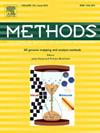实现小鼠口腔共聚焦激光内镜的高分辨率诊断
IF 4.3
3区 生物学
Q1 BIOCHEMICAL RESEARCH METHODS
引用次数: 0
摘要
口腔鳞状细胞癌(OSCC)的治疗预防将避免显著的发病率和死亡率。为了观察和测量治疗挑战的体内疗效,需要在没有动物牺牲的情况下进行显微镜水平的诊断。本研究介绍了一种改进的非侵入性细胞水平成像诊断方法,通过使用高分辨率扫描纤维共聚焦激光内窥镜(ViewnVivo)和局部荧光显像剂来诊断微病变。我们详细介绍了在临床前小鼠4-NQO诱导的OSCC模型中使用荧光,细胞渗透性癌症靶向剂(PARPi-FL)作为癌症靶向剂和泛细胞结构(acriflavine)剂的成像方案的开发和标准化。我们提供了一种综合的方法,用于从显微病变中识别口腔癌的进展阶段,并提供了与常规组织病理学相关的注释签名指南。我们的研究结果表明,PARPi-FL和吖啶黄素在体内CLE成像可以清楚地区分组织学正常和病理口腔组织。组织学异常增生和癌组织显示PARPi-FL阳性,与正常细胞核的规则间隔核染色相比,有异常的核染色模式。至关重要的是,这种方法检测肉眼不可见的微观变化,但组织学异常。我们对进行性口腔癌发生的观察模型有可能加速对早期分子诊断应用和新治疗效果的标准化询问,同时减少对动物牺牲的需要。这将导致更快的验证转化为人类应用,推进有效的早期口腔癌检测和预防。本文章由计算机程序翻译,如有差异,请以英文原文为准。

Enabling high-resolution diagnostic oral confocal laser endomicroscopy in mice
Therapeutic prevention of oral squamous cell carcinoma (OSCC) will avoid significant morbidity and mortality. To observe and measure the in vivo efficacy of therapeutic challenges, microscopic-level diagnosis without animal sacrifice is required. This study introduces a refined diagnostic methodology for non-invasive cellular-level imaging for diagnosis of micro-lesions by utilizing high-resolution scanning-fibre confocal laser endomicroscopy (ViewnVivo) with topical fluorescence imaging agents. We detail the development and standardization of imaging protocols using a fluorescent, cell-permeable cancer-targeting agent (PARPi-FL) as a cancer-targeting agent and a pan-cytoarchitectural (acriflavine) agent in a pre-clinical murine 4-NQO induced OSCC model. We provide comprehensive methodology for the in vivo identification of the progressive stages of oral carcinogenesis from microscopic lesions, supported by an annotated signature guide correlating with conventional histopathology. Our findings demonstrate that in vivo CLE imaging with both PARPi-FL and acriflavine clearly distinguishes between histologically normal and pathological oral tissue. Tissues with histologic dysplasia and carcinoma demonstrated PARPi-FL positivity and an aberrant nuclear staining pattern with acriflavine, compared to the regularly spaced nuclear staining of normal nuclei. Crucially, this methodology detects microscopic changes not visible to the naked eye, but histologically abnormal. Our observation model of progressive oral carcinogenesis has the potential to accelerate standardised interrogation of early molecular diagnostic applications and novel therapeutic efficacy, whilst reducing the need for animal sacrifice. This will result in faster validated translation to human applications, advancing effective early oral cancer detection and prevention.
求助全文
通过发布文献求助,成功后即可免费获取论文全文。
去求助
来源期刊

Methods
生物-生化研究方法
CiteScore
9.80
自引率
2.10%
发文量
222
审稿时长
11.3 weeks
期刊介绍:
Methods focuses on rapidly developing techniques in the experimental biological and medical sciences.
Each topical issue, organized by a guest editor who is an expert in the area covered, consists solely of invited quality articles by specialist authors, many of them reviews. Issues are devoted to specific technical approaches with emphasis on clear detailed descriptions of protocols that allow them to be reproduced easily. The background information provided enables researchers to understand the principles underlying the methods; other helpful sections include comparisons of alternative methods giving the advantages and disadvantages of particular methods, guidance on avoiding potential pitfalls, and suggestions for troubleshooting.
 求助内容:
求助内容: 应助结果提醒方式:
应助结果提醒方式:


